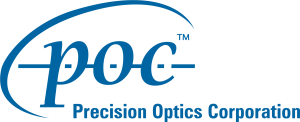In the fast-paced and ever-evolving medical device industry, speed, accuracy, and cost-effectiveness are critical. For many companies, developing reliable and innovative products quickly can be a challenging task, often hindered by the complexities of integrating various components and systems. This is where the Unity Platform comes in, offering a seamless, flexible solution that addresses common pain points for medical device developers.
Let’s take a look at how the Unity Platform solves key challenges that customers face in bringing a new medical device to market.
The Problem: Complex Integration and Lengthy Development Timelines
A medical device company is looking to develop an advanced optical system for a new diagnostic device, but is facing multiple obstacles in the process:
- Integration Issues: The device requires a combination of sensors, video systems, and illumination sources; however, the company is struggling to ensure that all these components work together efficiently.
- Time Constraints: Due to the fast-paced nature of the medical industry, there is immense pressure to bring the device to market quickly, necessitating a shortened development timeline.
- Customization Needs: The device had specific requirements, making it challenging to find an off-the-shelf solution that could meet all its needs without extensive customization.
- High Development Costs: Like most medical devices, the company requires a solution that strikes a balance between quality and cost, particularly in light of rising development expenses.
The Solution: Precision Optics’ Unity Platform
Enter the Unity Platform, a modular optical system designed to solve these exact issues.
- Streamlined Integration
The Unity Platform’s modular design allows companies to easily integrate required video systems, sensors, and illumination sources without worrying about compatibility. Rather than reinventing the wheel and building everything from scratch, companies can “plug and play” with various components, ensuring that each piece works seamlessly with the others.
By leveraging the Unity Platform’s flexible architecture, companies can quickly assemble a fully integrated optical system that meets all the performance requirements of their device, eliminating integration headaches and enabling a faster development timeline.
- Faster Time-to-Market
One of the biggest advantages of the Unity Platform is its ready-made, proven architecture. Rather than starting from scratch, companies can build on a foundation that has already been tested and refined. This dramatically reduces the time spent on initial development, allowing companies to fast-track their device’s journey from concept to prototype.
The Unity Platform’s modular nature allows the team to focus on customizing the platform to meet specific needs, rather than spending unnecessary time on basic functionality. With this head start, companies can meet tight deadlines and launch devices much faster than originally anticipated.
- Customization at Scale
Every medical device is unique, demanding very specific requirements for its optical systems. The Unity Platform’s scalability enables the team to tailor the platform to their specific needs without requiring an overhaul of the entire design. Whether it is adjusting the sensor configuration or integrating specialized video processing capabilities, the Unity Platform’s flexibility allows teams to create a customized solution that perfectly fits the device’s requirements.
This level of adaptability enables companies to modify the platform to meet both their immediate needs and future growth, ensuring long-term success without the need to invest in an entirely new system every time.
- Cost-Effective Development
By using a modular system, companies can avoid the high costs typically associated with developing a custom optical solution. The Unity Platform’s pre-engineered components reduce the need for costly R&D and engineering hours. Additionally, because the platform had already been optimized for medical use, companies can be confident in its reliability, reducing the risk of costly mistakes or redesigns later in the process.
The result? A high-quality, customizable optical system at a fraction of the cost of a completely tailored solution.
The Outcome: A Successful, Market-Ready Device
With the Unity Platform, teams can overcome the traditional hurdles that often slow down the development of medical devices. Integration is seamless, timelines are reduced, and products are delivered under budget—all while meeting the exact specifications required.
Not only can companies bring their diagnostic device to market faster, but they also set themselves up for future success. The modular nature of the Unity Platform means that as their product line grows, they can continue to adapt and evolve their devices without having to reinvent the wheel each time!
Why Unity Works
The Unity Platform is a game-changer for medical device developers because it simplifies the development process, reduces risk, and accelerates time to market. By offering a flexible, proven solution that can be customized to meet a wide range of needs, the Unity Platform helps companies overcome the complexities of integrating advanced optical systems into their devices.
Whether you’re designing a high-end surgical tool or a diagnostic device, the Unity Platform offers the tools and expertise you need to turn your ideas into reality faster, more efficiently, and at a lower cost.
For medical device developers seeking to streamline their processes and bring products to market more efficiently, Precision Optics’ Unity Platform provides the ultimate solution. It’s not just a product; it’s the key to unlocking a new era of innovation and efficiency in medical device development.
